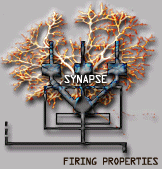 estrategia de empezar con mínima inteligencia en los proyectos de inteligencia artificial
estrategia de empezar con mínima inteligencia en los proyectos de inteligencia artificial
"The bottom-up theory proposes that higher and higher levels of intelligence can be reached by beginning with the lowest levels of intelligence, mastering them and proceeding to the next level. This more recent theory of how to approach the task of making a robot that is intelligent has been Rodney Brooks's main project at the MIT Artificial Intelligence Laboratory. One of the robots that he is working on is similar to a large metal cockroach. He and other proponents of this method begin with "lower" aspects of intelligence - perception, motor control and reflex - transform them into mathematical formulas and then program them into a computer. This intelligence focuses on "behavior" of the machine rather than on its ability to process information. The robot is able to move or "walk" with legs. It has a type of reflex that is able to "figure out" how to step over an object that is in its path. The simple structured programming moves the leg. The leg has "feelers" attached to it so that if a feeler comes into contact with an object, it triggers the computer to move the leg higher and higher until the object is scaled. Prior to this robot called Attila, computers took hours to advance just one meter (1994). One use for this type of robot is to allow entrance into places such as a simmering volcano for purposes of research without danger to a human being."
29.mar.2000
Pulsar tecla de vuelta
Glosario de Modelos del Cerebro - Carlos von der Becke.